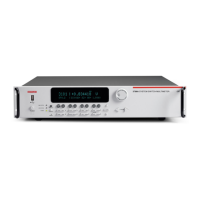Details
This is not available for "nofunction". If the command is queried when "nofunction" is
selected, nil is returned. If it is written when "nofunction" is selected, an error is returned.
When you use a reading buffer with a command or action that makes multiple readings, all readings
are available in the reading buffer. However, only the last reading is returned as a reading with the
command.
If you define a specific reading buffer, the reading buffer must exist before you make the
measurement.
You can also use a reading buffer to store additional information that is acquired while making a
measurement.
The dmm.measurecount attribute determines how many measurements are performed. When you
use a buffer, it also determines if the reading buffer has enough room to store the requested
readings. The amount of room is based on readings already stored in the buffer (bufferVar.n), the
capacity of the buffer (bufferVar.capacity), and the append mode of the reading buffer
(bufferVar.appendmode). If the append mode is set to 0, any stored readings in the buffer are
cleared before new ones are stored. If append mode is set to 1, any stored readings remain in the
buffer and new ones are added to the buffer after the stored ones.
Example
Also see
Reading buffers (on page 6-7, on page 6-1)
bufferVar.appendmode (on page 11-16)
bufferVar.capacity (on page 11-19)
bufferVar.n (on page 11-28)
dmm.makebuffer() (on page 11-196)
dmm.measurecount (on page 11-206)
dmm.measurewithtime() (on page 11-207)

